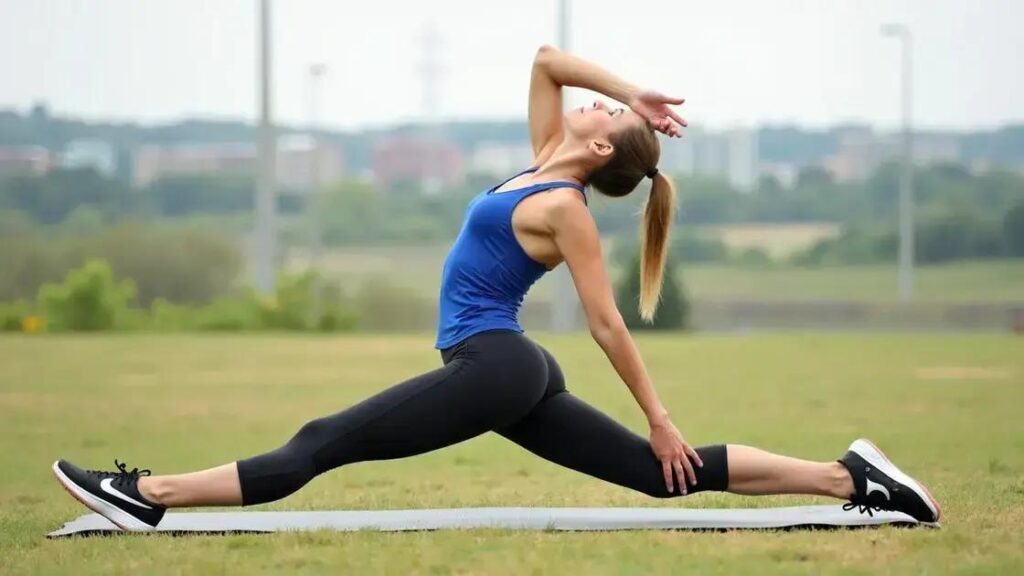Cooling down after exercise is crucial for recovery as it helps reduce muscle soreness, prevent injuries, and gradually lower heart rate. Effective techniques include light aerobic activity, static stretching, and deep breathing, while avoiding common mistakes like skipping cooldowns and neglecting hydration is essential for optimal performance.
Cooling down after exercise is not just a suggestion; it’s an essential part of any workout routine. When you push your body, the risk of injury increases, and improper recovery can hinder your performance. This article explores the importance of cooling down, detailing its benefits, effective techniques, and common mistakes to avoid. Prioritizing this crucial step can help you achieve better results and maintain your physical well-being.
What is Cooling Down?

Cooling down is the process of gradually reducing your heart rate and easing your body back to its resting state after intense physical activity. This time is essential for preventing muscle stiffness and soreness. When you exercise, your muscles work hard, and blood is pumped rapidly to deliver oxygen. Skipping the cooldown can leave your body in a stressed state, making recovery harder.
A cool down usually includes light aerobic activity such as walking or gentle cycling, followed by static stretching. This helps to improve flexibility and allows your body to transition back to a resting state. It’s crucial to integrate cooling down into your fitness routine to aid recovery.
How to Cool Down
The typical cooldown period lasts about 5 to 10 minutes, depending on the intensity of your workout. Start by reducing the speed or intensity of your exercise gradually. For example, if you’ve been running, slow down to a jog, and then to a walk.
After this light aerobic activity, incorporate stretching exercises that focus on the major muscle groups you engaged during your workout. Hold each stretch for about 15-30 seconds to maximize its effectiveness.
In summary, understanding what cooling down is can help you appreciate its role in your recovery process. Don’t overlook this crucial part of your workout!
Benefits of Cooling Down

The benefits of cooling down after exercise are numerous and essential for both physical and mental recovery. First, a proper cooldown helps to reduce muscle soreness and stiffness. When you stop exercising suddenly, lactic acid builds up in your muscles, causing discomfort. Gradually lowering your intensity during a cooldown helps your body to clear away this acid and recover more quickly.
Improving flexibility is another benefit of cooling down. Stretching during this time can enhance your range of motion and help prevent injuries in the future. By focusing on key muscle groups, you can keep your body limber and ready for your next workout.
Moreover, cooling down is effective for regulating heart rate. It allows your heart rate to decrease gradually, which is healthier than stopping abruptly. A gradual cooldown can lower your risk of dizziness or fainting.
Finally, taking time to cool down promotes a sense of relaxation. It gives you a moment to reflect on your exercise session, embrace mindfulness, and enjoy a peaceful transition from high-energy activity to a more relaxed state. This mental shift supports overall wellness and prepares you for what’s next in your day.
Effective Cooling Down Techniques

Effective cooling down techniques can make a significant difference in your recovery after exercise. One of the most common methods is to gradually decrease the intensity of your workout. For example, if you’ve been running, slow down to a brisk walk before stopping completely. This helps your heart rate return to normal smoothly.
Static stretching is another crucial technique. After your workout, focus on stretches that target the major muscle groups you used. Hold each stretch for 15 to 30 seconds to allow your muscles to relax and lengthen. Key stretches include hamstring stretches, quadriceps stretches, and calf stretches.
Incorporating deep breathing exercises during your cooldown is also beneficial. Breathe in deeply through your nose, filling your lungs, and then exhale slowly through your mouth. This technique helps to calm your nervous system and lower stress levels, enhancing your recovery process.
Lastly, consider using a foam roller after your cooldown routine. Foam rolling helps to release muscle tightness and improve blood flow, which can aid in the recovery process. Target areas like your back, legs, and shoulders for the best results.
Common Mistakes After Exercise

After a workout, many people make common mistakes that can affect their recovery. One prevalent mistake is skipping the cooldown entirely. This can lead to increased muscle soreness and stiffness, as your body does not have enough time to transition back to a resting state. Always remember to set aside time for a proper cooldown.
Another mistake is neglecting hydration. After exercising, it is essential to replenish lost fluids. Failing to drink water can lead to dehydration, which can diminish recovery speed and overall performance. Remember to hydrate before, during, and after your workout.
Ignoring nutrition is also a common error. Your body needs nutrients after exercise to recover effectively. Skipping meals or opting for unhealthy snacks can hinder muscle repair and growth. Aim to consume a balanced meal or snack with protein and carbohydrates within hours of finishing your workout.
Finally, many people forget to listen to their bodies after exercising. If you feel persistent soreness or pain, pushing through it can lead to injuries. Understanding the signals your body sends can help prevent long-term damage.
In Conclusion: The Vital Role of Cooling Down
The importance of cooling down after exercise cannot be overstated. By incorporating effective cooling down techniques, you can enhance your recovery, improve flexibility, and prevent injuries. Understanding common mistakes, such as skipping the cooldown or neglecting hydration, can further support your fitness journey.
By making cooling down a regular part of your exercise routine, you will not only optimize your performance but also enjoy a healthier and more sustainable approach to fitness. Prioritize this crucial step to unlock your full potential and maintain your physical well-being.
FAQ – Frequently Asked Questions about Cooling Down After Exercise
Why is cooling down important after exercise?
Cooling down helps to gradually lower your heart rate, reduce muscle soreness, and prevent injuries, which enhances your recovery.
What are some effective cooling down techniques?
Effective techniques include light aerobic activity, static stretching, deep breathing exercises, and using a foam roller to relieve muscle tightness.
How long should I cool down after exercising?
A proper cooldown should last about 5 to 10 minutes, depending on the intensity of your workout, allowing your body adequate time to adjust.
What are common mistakes people make after exercise?
Common mistakes include skipping the cooldown, neglecting hydration, ignoring nutrition, and not listening to your body’s signals for recovery.
Can cooling down improve my flexibility?
Yes, incorporating static stretching during your cooldown can help improve flexibility and reduce the risk of injuries.
What should I eat or drink after working out?
After exercising, aim to consume a balanced meal or snack that includes protein and carbohydrates to support muscle recovery and replenish energy.












